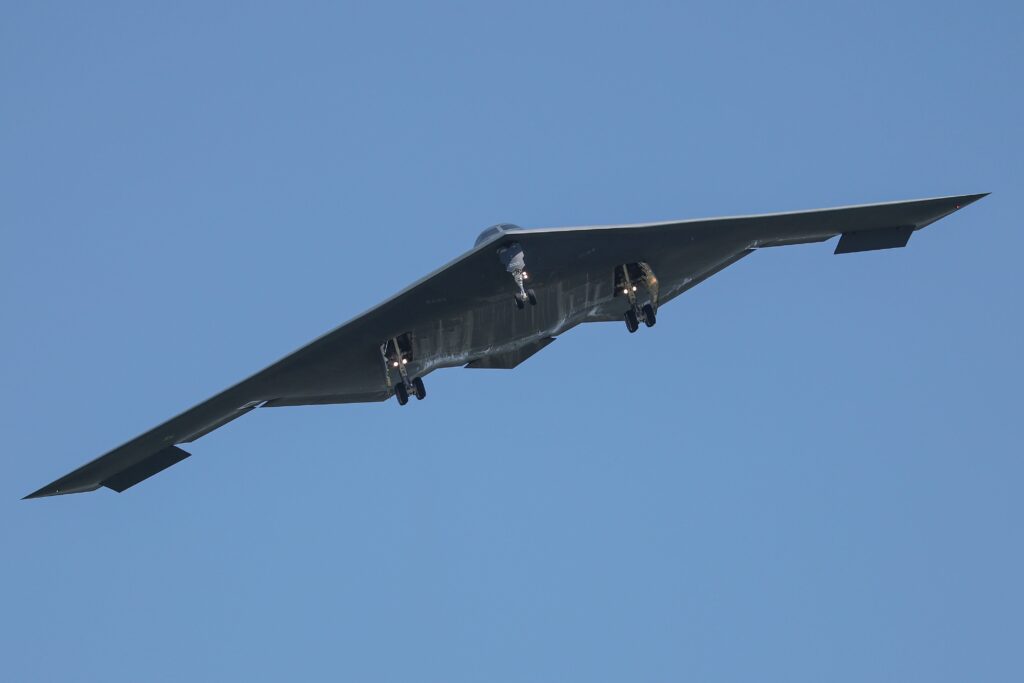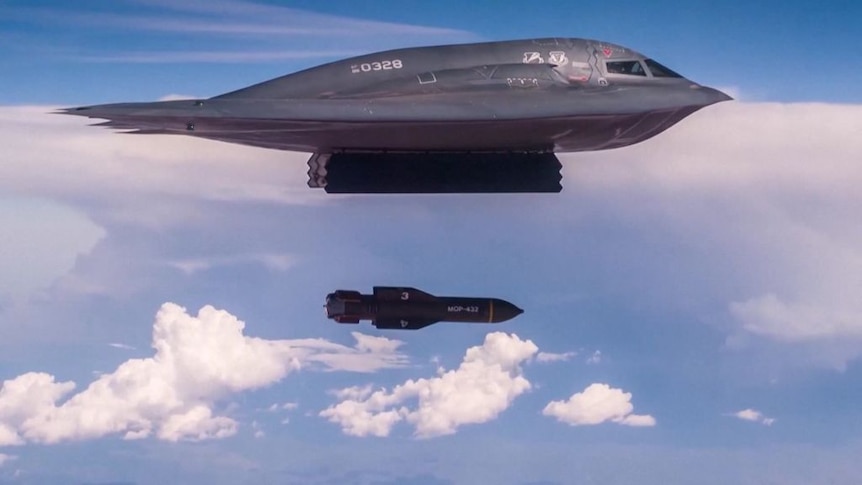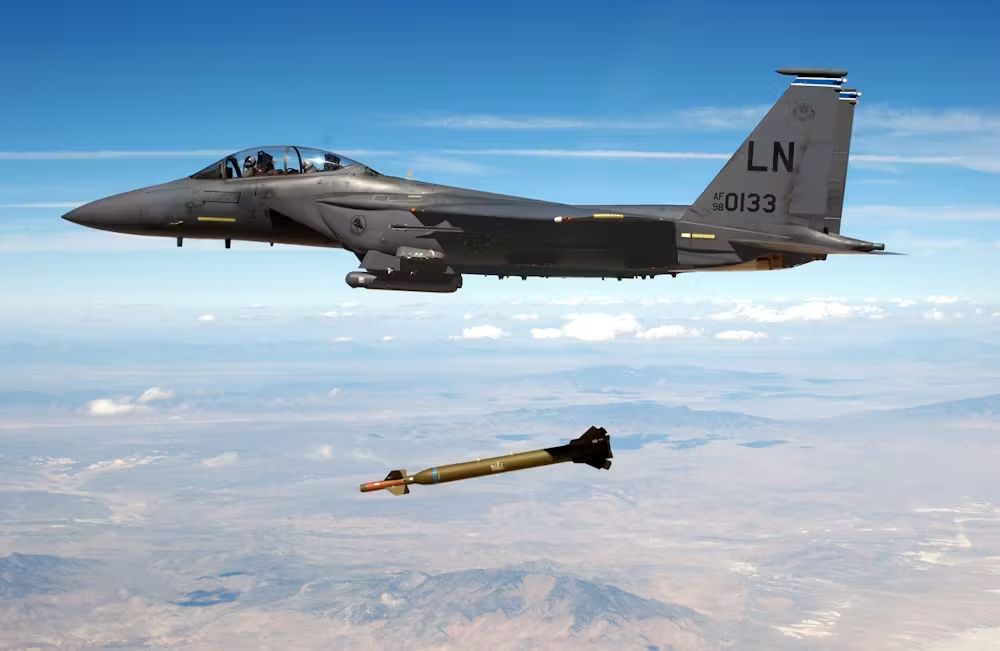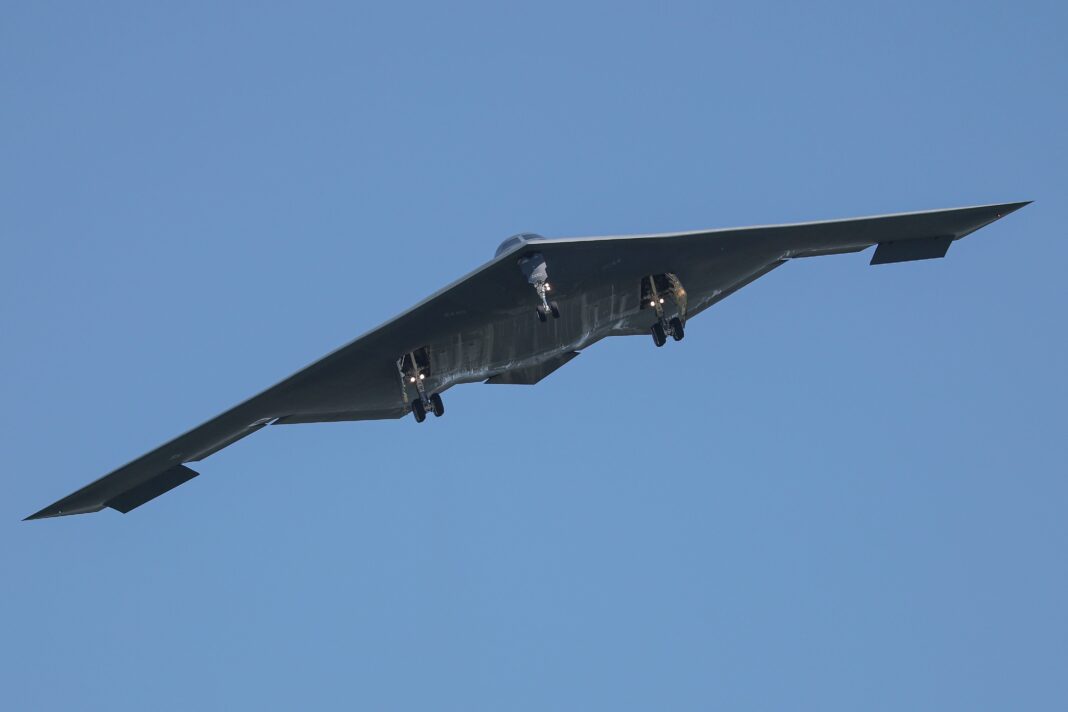On June 21, 2025, the United States launched a high-risk mission called Operation Midnight Hammer, targeting three of Iran’s most heavily protected nuclear facilities, Fordow, Natanz, and Isfahan. Flying from Whiteman Air Force Base in Missouri, seven B-2 Spirit stealth bombers crossed the Atlantic under the cover of darkness, each loaded with GBU-57 “bunker buster” bombs capable of destroying reinforced underground targets.
In a precise, 25-minute window, they dropped 14 of these massive bombs before vanishing back into the sky. Simultaneously, U.S. submarines in the Gulf launched Tomahawk cruise missiles at additional sites. The entire mission was carried out in near-total silence, with Iranian officials unaware of their presence until the mission was complete. According to a detailed report by the BBC, the aircraft were supported by refueling tankers and decoy flights to ensure a seamless return across international airspace.
But why the B-2? What makes this aircraft, built in the 1990s, still the go-to weapon for missions that demand stealth, reach, and shock?
What Is the B-2 Spirit?

Nicknamed the “ghost in the sky,” the B-2 Spirit is a long-range, radar-evading bomber developed by Northrop Grumman and operated by the U.S. Air Force. It’s shaped like a flying wing, with no tail and no protruding parts—designed to reflect enemy radar away in every direction.
At over $2 billion per unit, it remains one of the most expensive military aircraft ever built. But what that buys is near-invisibility, long-distance endurance, and the ability to strike anywhere on Earth, even from halfway across the world.
According to the U.S. Air Force, the B-2 can carry up to 18,000 kilograms of weapons, fly more than 11,000 kilometers on a single tank, and with mid-air refueling, stay airborne for over 40 hours.
How the B-2 Spirit works

At first glance, the B-2 looks like a spaceship. But its power lies in the science hidden beneath its sleek exterior. The aircraft’s flying wing design eliminates vertical surfaces that typically reflect radar, reducing its visibility. Every angle, curve, and coating on the B-2 is engineered for one thing: stealth.
The jet uses Radar-Absorbent Material (RAM), a special coating that soaks up radar waves rather than bouncing them back. Combined with a jagged heat signature—thanks to deeply embedded engines and an exhaust-cooling system—it becomes nearly undetectable on both radar and infrared sensors.
Inside, the B-2 is powered by four General Electric F118-GE-100 engines. These are tucked within the wings to shield them from enemy sensors. The engines don’t use afterburners, which helps minimize noise and heat.
Navigation and targeting rely on a combination of inertial navigation, GPS, and advanced onboard computers that constantly adjust for wind, gravity, and other flight variables. Real-time communication with satellites and command centers allows mission plans to be updated midair—even as the aircraft cruises silently over hostile territory.
Perhaps the most remarkable feature is that all of this—global reach, pinpoint strikes, stealthy disappearance—is managed by just two pilots.
What it’s Like to watch a B-2 in action

The B-2 doesn’t look or behave like a typical aircraft. Picture a sleek black boomerang gliding through the night with no visible lights and no roar. Pilots describe flying it as surreal: “We take off in total darkness, fly in total silence, and strike before anyone knows we’re there.”
Its edges are smooth, its surface matte, and the exhaust is cooled to avoid showing up on heat sensors. It’s like a shadow, shapeless, soundless and unstoppable.
How it Compares: The B-2 vs. the rest

In a world of cutting-edge jets and bombers, the B-2 still stands alone. The B-1 Lancer can carry more bombs and fly faster, but it lacks stealth and requires fighter escorts. The B-52 Stratofortress is a legend in endurance but is easily tracked by radar and better suited for low-risk, high-volume bombing runs. Modern fighters like the F-35 are agile and stealthy, but they lack the range and payload for deep strikes. Even drones and hypersonic weapons, while fast or unmanned, don’t match the B-2’s blend of stealth, flexibility, and destructive power.
Only the B-2 can fly undetected across the globe, drop nuclear or bunker-busting bombs, and return home without backup.
The technology behind the Ghost
The B-2’s stealth is more than skin deep. Its radar-absorbing materials, curved surfaces, and internal weapons bays are all designed to minimize its radar cross-section, estimated to be no larger than a small bird. Its engines are buried deep within the wing to reduce heat signatures, and its exhaust is cooled to avoid infrared detection. According to livemint.
Inside, the cockpit is equipped with digital navigation systems, encrypted satellite communications, and mission automation that allows two pilots to manage long-haul operations. The aircraft also includes comfort features like a microwave, refrigerator, and rest area to support missions lasting over 37 hours.
Its avionics and targeting systems have been continuously upgraded to allow real-time mission updates mid-flight and secure coordination with other aircraft, satellites, and intelligence feeds. The B-2 merges old-world airframe strength with new-world digital connectivity.
Geopolitical impact: What This Strike Signals
The use of B-2 bombers in the Iran strike wasn’t just about military capability it was a strategic message. It demonstrated that the U.S. can deliver high-precision strikes from its own soil, bypassing regional airspace restrictions or diplomatic hurdles.
For Iran, it was a clear warning: even heavily fortified underground facilities are not safe. For other countries, both allies and rivals, it was a demonstration of unmatched global reach.
But the ripple effects extend far beyond the Middle East. For African nations, including Ghana, the strike underscores the shifting nature of global power projection. As defenceWeb notes, the operation highlights how modern warfare is no longer confined to regional theaters, conflict can arrive silently, from thousands of kilometers away, without warning.
For Ghanaian defense planners and policymakers, this raises important questions about airspace sovereignty, early warning systems, and the need for regional coordination on surveillance and cybersecurity. It also reinforces the importance of diplomatic agility in a world where strategic decisions made continents away can have local consequences.
And for African defense analysts, the B-2’s deployment is a reminder that deterrence today isn’t just about troop numbers or visible firepower it’s about stealth, speed, and the ability to act decisively across borders and oceans.
Final thoughts: Why the B-2 still rules the skies
Only 21 B-2 bombers were ever built, and just 19 remain in service. Each one is treated like a national treasure—a flying piece of strategic power. The next-generation B-21 Raider is expected to take over in a few years, but for now, the Spirit still defines silent supremacy.
It’s stealth with substance. Precision wrapped in shadows. A 170-foot wingspan ghost that can rewrite global headlines, and then vanish.




